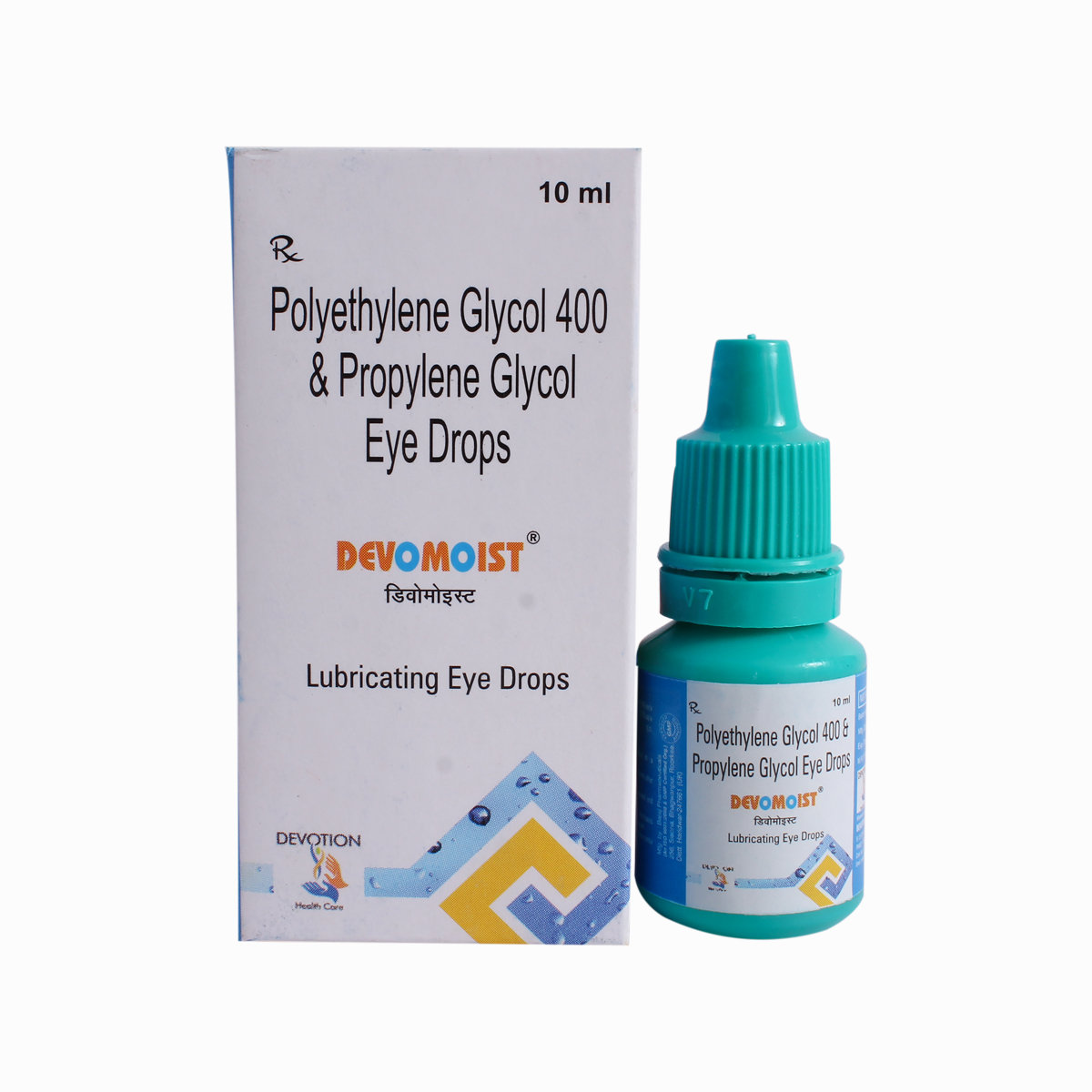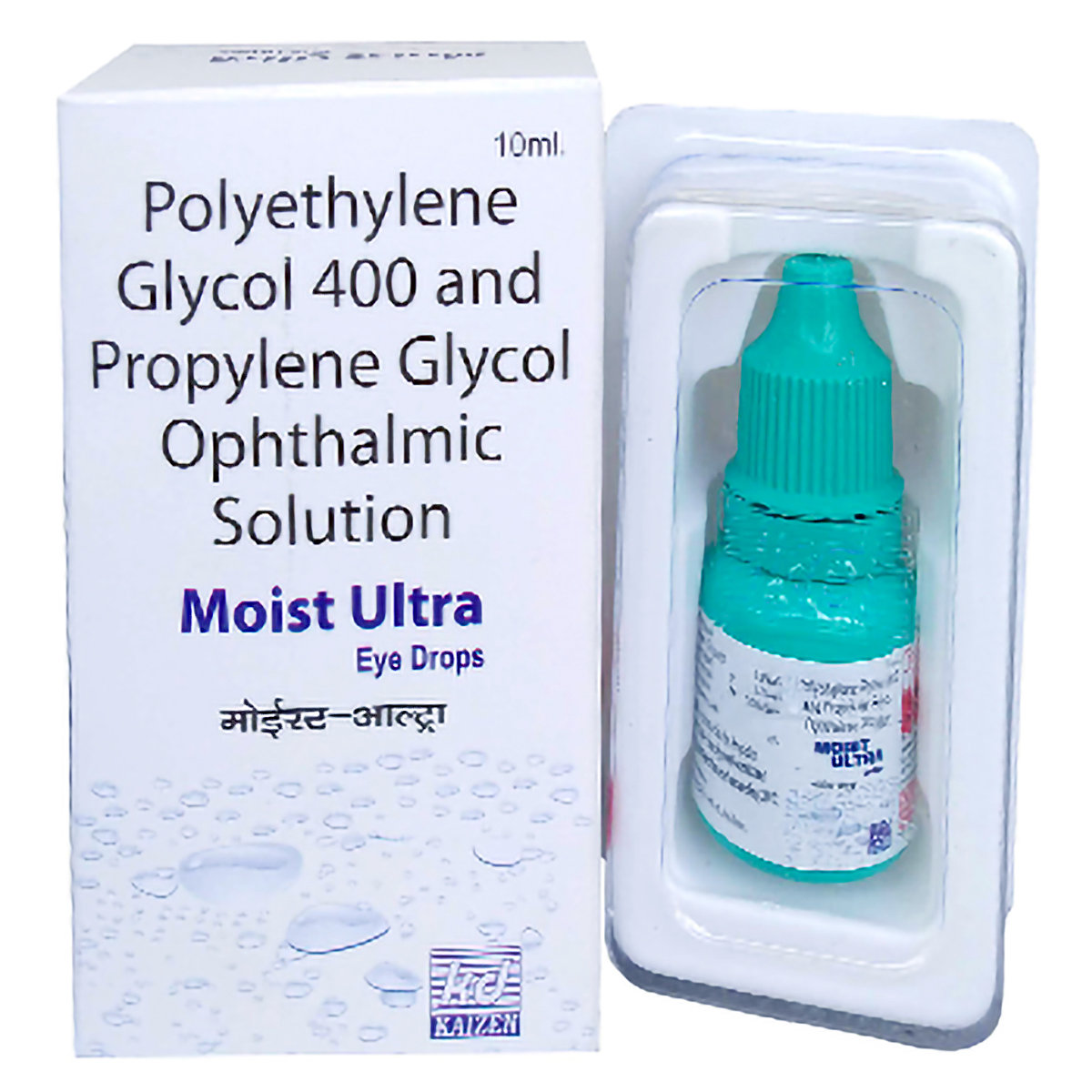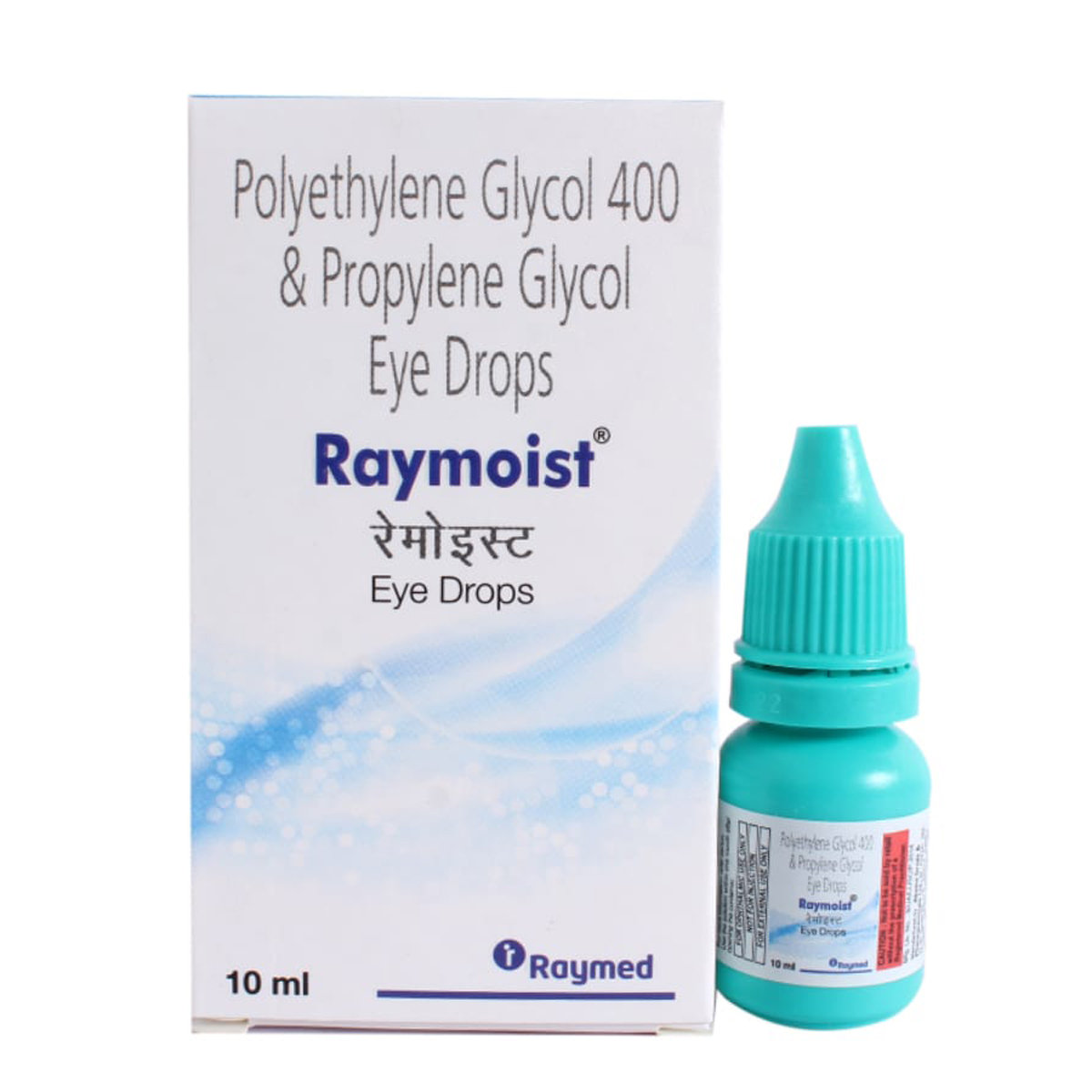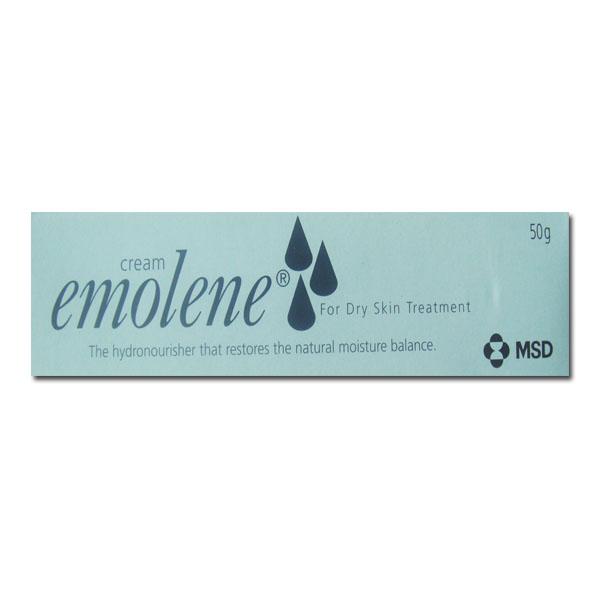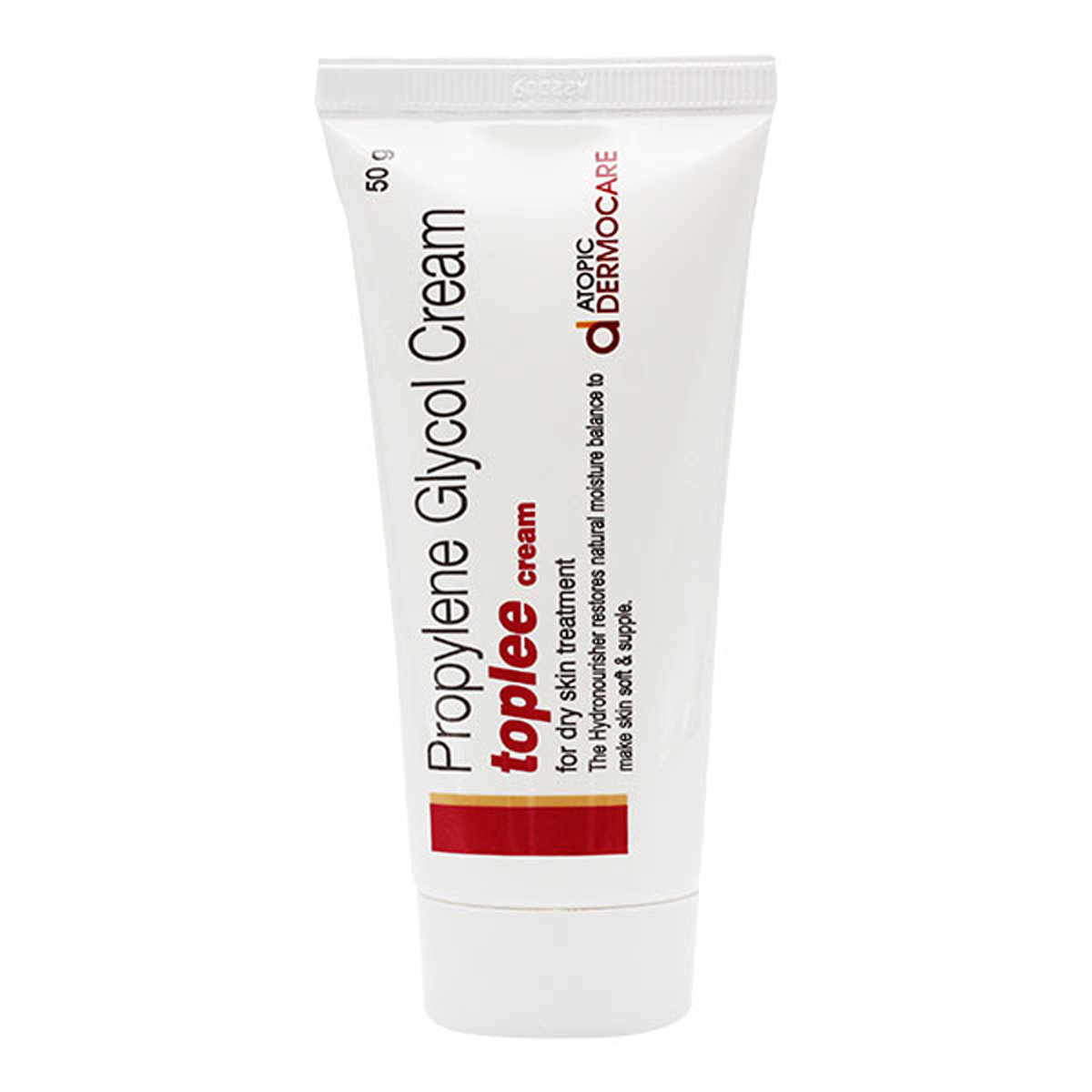Polyethylene Glycol+propylene Glycol
About Polyethylene Glycol+propylene Glycol
Polyethylene Glycol+propylene Glycol belongs to the class of medications called ‘eye lubricants used to relieve symptoms of dry eyes. Dry eye is a condition commonly due to allergic eye diseases or eye infections, wind, heating/air conditioning, and certain medications.
Polyethylene Glycol+propylene Glycol contains polyethylene glycol and propylene glycol, which work similarly to natural tears and temporarily relieve burning and irritation due to dry eyes.
The common side-effects of Polyethylene Glycol+propylene Glycol are application site reactions such as burning/stinging sensation or redness in the eye, itching, irritation, and blurred vision. These side effects are usually mild and temporary. Consult your doctor if these side effects persist or worsen.
Do not use Polyethylene Glycol+propylene Glycol if you are allergic to any of its components. Before using Polyethylene Glycol+propylene Glycol, inform your doctor if you have glaucoma (a condition with increased pressure in the eye), ulcers in the eye, have undergone or are scheduled for eye surgery, or have any other eye problems.
Uses of Polyethylene Glycol+propylene Glycol
Medicinal Benefits
- Polyethylene Glycol+propylene Glycol is a lubricating agent used to relieve symptoms of dry eye.
- It contains Polyethene glycol and propylene glycol, which work by hydrating and protecting the eye surface.
- Polyethylene Glycol+propylene Glycol helps moisten the eyes and reduce dryness, irritation, and burning sensations.
- Forms a protective shield over the cornea, preventing further damage and irritation from environmental factors like wind or screen exposure.
- Improves the quality and retention of the tear film, helping maintain eye moisture and clarity.
- Soothes inflammation caused by dry eye and enhances overall eye comfort.
- Promotes healing of the eye surface in cases of mild abrasions or damage due to dryness.
- By maintaining a stable tear film, these agents can help reduce blurriness caused by dry eye.
Directions for Use
- Follow your doctor's instructions on the dosage and timing of this medication to ensure safety.
- Lie down and tilt your head backwards. Gently pull your lower eyelid with your index finger to create a pocket. Instil the number of drops as advised by the doctor into the pocket of the lower eyelid. Close your eyes for 1-2 minutes.
- Avoid touching the tip of the container to prevent contamination.
Storage
Side Effects of Polyethylene Glycol+propylene Glycol
- Itching
- Irritation
- Blurred vision
- Stinging sensation
Drug Warnings
- Do not use Polyethylene Glycol+propylene Glycol if you are allergic to any of its components.
- Before using Polyethylene Glycol+propylene Glycol, inform your doctor if you are using any other eye drops or ointment.
- Inform your doctor immediately if you experience persistent visual disturbances while using Polyethylene Glycol+propylene Glycol.
- Do not wear contact lenses while using Polyethylene Glycol+propylene Glycol as it may affect your recovery.
- Inform your doctor if you experience eye pain, continued redness, or eye irritation or if your condition worsens or persists for more than 72 hours after using Polyethylene Glycol+propylene Glycol.
Drug Interactions
Drug-Drug Interactions: No interactions found.
Drug-Food Interactions: No interactions found.
Drug-Disease Interactions: No interactions found.
Drug-Drug Interactions Checker List:
Safety Advice

Alcohol
cautionIt is advised to avoid alcohol intake during the course.

Pregnancy
consult your doctorPolyethylene Glycol+propylene Glycol can be used in pregnant women only when advised by a healthcare professional.

Breast Feeding
consult your doctorPolyethylene Glycol+propylene Glycol can be used in breastfeeding mothers only when advised by a healthcare professional.

Driving
cautionPolyethylene Glycol+propylene Glycol may cause vision problems. So, avoid driving or operating heavy machinery until your vision clears.

Liver
consult your doctorPolyethylene Glycol+propylene Glycol can be used in patients with liver diseases when advised by an ophthalmologist.

Kidney
consult your doctorPolyethylene Glycol+propylene Glycol can be used in patients with kidney diseases when advised by an ophthalmologist.

Children
cautionPolyethylene Glycol+propylene Glycol can be used in children only when advised by an ophthalmologist.
Habit Forming
Diet & Lifestyle Advise
- Sleep for at least six to eight hours to rejuvenate your eyes naturally.
- Wash your eyes with clean water at least two to three times a day.
- Manage stress, eat healthily, drink plenty of water, exercise regularly, and get plenty of sleep.
- Avoid alcoholic beverages as they can make you dehydrated and affect your sleep. This effect can also affect your body’s ability to fight off infections.
- Reduce screen time (by avoiding watching TV or phone) and use sunglasses while going out into the sunlight.
Special Advise
- If you use any other eye drops or ointments, maintain a gap of ten minutes between applying each one.
Patients Concern
Disease/Condition Glossary
Dry eyes: Dry eye, also called xeropthalmia, is a condition that occurs when there is not enough lubrication in the eye due to decreased production of tears or production of low-quality tears. This condition may lead to inflammation and damage to the eye. Symptoms include a burning or stinging sensation in the eye, eye irritation, sensitivity to light, redness, and blurred vision. It may occur due to ageing, allergic eye diseases, thyroid problems, vitamin A deficiency, certain medications and eyelid problems.
FAQs
Polyethylene Glycol+propylene Glycol is a lubricant that is used in the treatment of dry eyes.
Polyethylene Glycol+propylene Glycol is a combination of two lubricating medicines, polyethylene glycol and propylene glycol, that help treat dry eyes. Polyethene glycol and propylene glycol work similarly to natural tears and temporarily relieve burning and irritation due to dry eyes.
If you are using other eye drops along with Polyethylene Glycol+propylene Glycol, maintain an interval of at least 5 to 10 minutes before administering other medicines in the same eye to avoid dilution.
Dry eyes may cause blurred vision due to a decrease in tear production in the eye. However, it doesn't cause permanent disturbances to your vision. The vision improves with the use of eye drops or when your eye condition improves.
The common side-effects of Polyethylene Glycol+propylene Glycol are application site reactions such as burning/stinging sensation or redness in the eye, increased eye sensitivity to light, blurred vision and watery eyes.
Do not wear contact lenses while using Polyethylene Glycol+propylene Glycol and discard the eye drops after completing the course of therapy or within one month after opening the bottle. Polyethylene Glycol+propylene Glycol may cause sensitivity to light, so wear sunglasses while going outside during the daytime.
Your doctor will determine the dosing frequency based on your condition. Please consult the doctor.
Yes, Polyethylene Glycol+propylene Glycol is a lubricant that helps provide relief from symptoms of dry eyes.
Polyethylene Glycol+propylene Glycol might cause temporary blurred vision. Avoid driving or operating machinery until your vision is clear.
Store Polyethylene Glycol+propylene Glycol at room temperature, protected from light. Do not freeze. Keep out of sight and reach of children.
No, Polyethylene Glycol+propylene Glycol is a safe and well-tolerated medicine. It is not bad or harmful.

